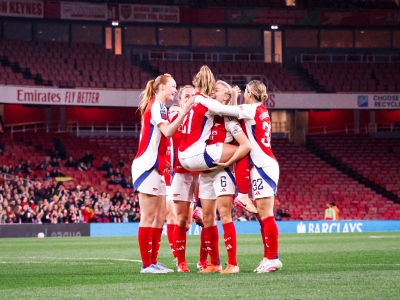Okay. Alex Fynn is, as some of you may be aware, co-author of a couple of books with my good self. Part of the deal struck with this particular devil is that, on occasion, I shamelessly plug something he is involved with. About this time every year, Alex is invited by the The Birkbeck Sport Business Centre to give a lecture, and Alex has asked me to publicise the 2011 event for two reasons.
1. He always likes to get a decent turnout.
2. These lectures are open to the public.
It takes place this Wednesday (30 March) at 6pm in the Clore Building, Birkbeck College, Torrington Square, London WC1 7HX
This time around, Alex will be talking about the commercial revolutions at Spurs and Arsenal, two clubs he has worked for and at which he has good behind the scenes contacts. Specifically, he will address how they fell so far behind Manchester United in this area over the last 20 years. The full details can be found here, including a link to a map (nearest tubes are Goodge Street and Russell Square). However, details of what Alex will be talking about are reproduced below…
Heroes and Villains: the inside story of the commercial revolutions of Arsenal and Tottenham
Arsenal and Tottenham Hotspur are two of the most successful clubs in both English and European football. Both participated in this year’s UEFA Champions League, with Tottenham through to the quarter-final stage. And in financial terms both are major European football institutions; in the 2009/2010 Deloitte Football Money League Arsenal were ranked 5th in terms of total revenue and Tottenham were ranked 12th (Deloitte, 2011, page 5). Both are that rare phenomenon in the English Premier League, clubs that consistently make a profit (Deloitte, 2010, Appendices, pages 2-3), albeit a small one.
As a Director of the Saatchi & Saatchi advertising agency in the 1980s and 1990s Alex Fynn, the well-known football industry consultant and media commentator, helped produce the first advertising campaign ever for a football club. He has advised both Tottenham Hotspur and Arsenal on media and marketing strategies. However, in this presentation Alex Fynn, argues that whilst both clubs deserve due credit for operating sustainable business models over many years in an environment where chronic loss-making is the norm, nevertheless they have both significantly underperformed in terms of the scale and effectiveness of their commercial activities, and that this has handicapped their ability to compete with other leading clubs notably Manchester United. By way of example, in the 2009/2010 season whilst Arsenal had total revenues of £224.4m and Tottenham £119.8m, Manchester United had total revenues of £286.4m. Manchester United exceeded the revenues of Arsenal and Tottenham on all three key components: matchday (stadium revenues), broadcasting, and most notably commercial revenue where it generated £81.4m (Deloitte, 2011, page 11) to Arsenal’s £44m (Deloitte, 2011, page 13) and Tottenham’s £31.5m (Deloitte, 2011, page 20).
Alex Fynn argues that there are very particular reasons why historically both clubs have fallen behind Manchester United in terms of commercial income generating power. In the case of Arsenal the move to the Emirates stadium represents a bold move to address the “income-gap” but there is more to be done. In the case of Tottenham he makes the case that it is ironic that it was at White Hart Lane in the 1980s, under Irving Scholar (1992) that the true commercial revolution in English football began, given that this was not effectively followed through by his successor-owners.
Critically Alex will pose the following key questions:
1. What were the key factors that led Arsenal and Tottenham to lag behind Manchester United in terms of their commercial revenue generating power and how has this affected their ability to compete on the field of play?
2. How might the gap with Manchester United now be closed via new commercial initiatives?







